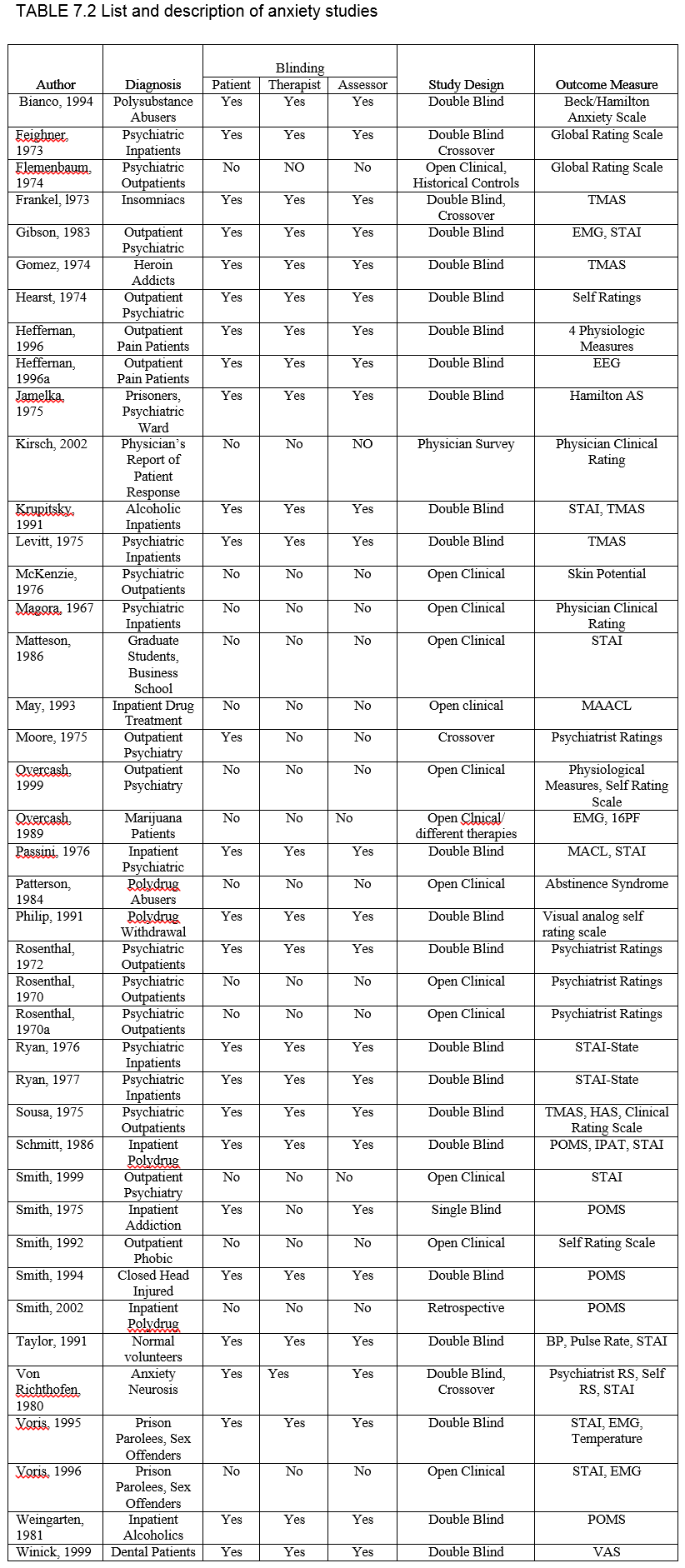There has now been almost 40 years of experience in the U.S. of CES as a non medication treatment for anxiety.
Also noteworthy is that among the more than 2000 patients who have been involved in CES studies in the U.S there has been no significant, negative side effect reported from the use of CES. As the National Research Council reported to the FDA when asked to evaluate the safety of CES, “Review of these reports reveals that significant side effects or complications attributable to the procedure are virtually nonexistent.”

Earlier meta-analysts completed their meta-analyses by the use of published means and standard deviations. Most authors do not report these when they publish, so that among the more than 100 CES studies published in the U.S., only 8 could be found that contained that information. Two meta-analyses were performed limited to the use of these 8 studies, one at Harvard and one at the University of Tulsa Graduate School, and both concluded that CES was unquestionably effective for the treatment of anxiety.
Very early on in the U.S. the anxiety found in the substance abstinence syndrome was treated with CES. Patients who withdraw from various addictive substances suffer intensively from anxiety, depression and sleep disturbance. Because that group has proven susceptible to cross addiction to psychoactive medications, and because they are also more resistant to the effects of most of those medications than are non-addicted patients, CES soon became a treatment of choice in both inpatient and outpatient treatment programs for this group of patients.
Luckily for CES meta-analysts, there are available journals that have a history of readily publishing negative CES studies, while on occasion refusing to publish studies with positive findings. To everyone’s surprise, journal editors (or their chosen group of peer reviewers) can be biased.
A meta-analyst has succeeded if the majority of studies that are available have been identified, since it can easily be shown statistically that unless the analyst was specifically biased in the sampling procedure, the outcome would rarely be changed importantly if the remainder of the completed studies appeared in the analysis. This point will be returned to later when the standard error of the mean and the confidence limits of the effect size is discussed.
In the field of CES the analyst has an advantage in that it is a small, tightly knit field in which most researchers know what the others are doing or have published.
Ref> Dr. Ray Smith
